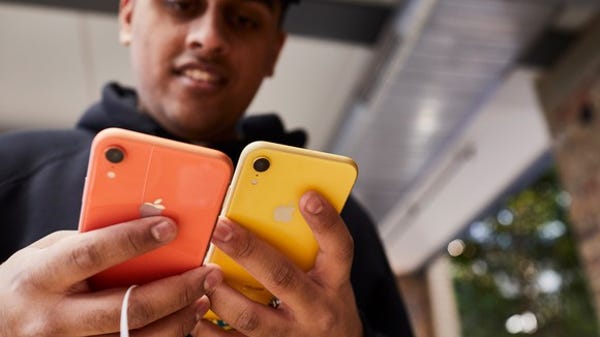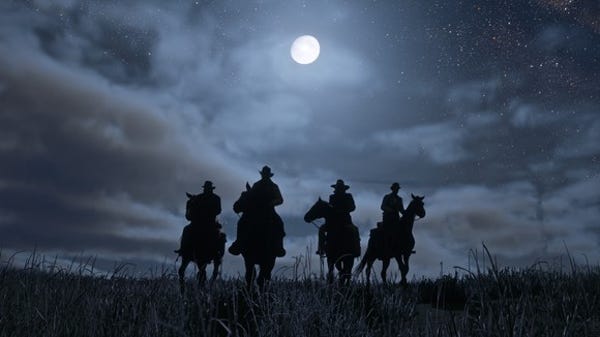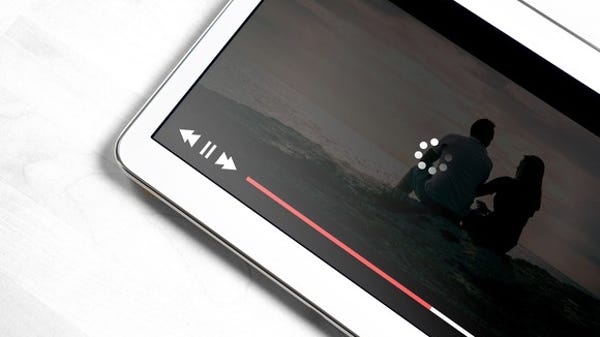 |
| |
| |
| |
| |
| |
| The people have spoken. |
| Enough is enough with all those subscriptions. |
| This week, YouTube reversed course from its grand idea, first introduced in October, 2015, that its core young audience would happily pay $9.99 monthly to see original movies and series starring influential YouTube creators like Lilly Singh, Gigi Gorgeous and Joey Graceffa. |
| We've spoken here at Talking Tech often over the last year about the potential for subscription burnout. There are just too many services asking us to pay for what was once free, and YouTube Premium is now the poster child for consumers refusing to be boxed in. Take note Disney, Warner Bros. and all the others that have new streaming subscription services in the works. |
| YouTube Red, as it was first known, launched as a service for the core YouTube audience, with the added bonus of ad-free YouTube for the rest of us. |
| It threw in a free subscription to Google Play Music to sweeten the deal. When that didn't work, it launched a new YouTube Music subscription service, similar to Spotify, changed the name of Red to YouTube Premium in May, and raised the price to $11.99. |
| That didn't stop the bleeding. |
| Now, all those originals will continue in production, but they will eventually have ads and be available for the entire, gigantic YouTube audience of nearly 2 billion people. |
| "YouTube always had an uphill battle to convert its users to paying customers," says Peter Csathy an industry analyst and the author of the new book "Fearless Media: an Insiders Guide and Call to Action for Today's New Media World." |
| YouTube has historically been a free platform, and "once a brand is established, it's difficult to change your identity," he adds. "The audience is used to YouTube being free." |
| At the time of its debut, YouTube's Chief Business Officer Robert Kyncl called Red "a major evolution for our platform. We're giving fans a new way to enjoy YouTube." |
| YouTube has never publicly cited subscription numbers for its services, but Csathy projects that YouTube Premium has less than 3.5 million subscribers. By contrast, Netflix, which rules digital media, has nearly 120 million subscribers and Amazon has over 100 million members of its Prime service, which offers expedited shipping and video entertainment. Apple is looking to compete with a slate of high-profile programming (featuring the likes of Jennifer Aniston, Reese Witherspoon, Oprah Winfrey and more) that could be given away to owners of Apple devices. CBS, Hulu and others are also competing for your digital entertainment dollars. |
| In a statement, YouTube said it's making the shift "to meet the growing demand of a more global fanbase," – that is, to get more folks to see the productions. The changes will not go into effect immediately. Cobra Kai (a sequel to The Karate Kid) and Impulse , about a 16-year-old with kinetic powers, will continue to be under a pay wall in 2019. Effective in 2020, all productions will be available to the entire YouTube audience – with ads – says YouTube.YouTube says it has no plans to shut it down. |
| Additionally this week, YouTube lifted the "Stories" format from Snapchat, and began offering established creators with over 10,000 subscribers the opportunity to offer disappearing videos. |
| The YouTube Stories will last longer than Instagram and Snapchat stories – for seven days, and only on the YouTube mobile app. The idea is to have a way for creators to respond to fans, as an alternative to comments. |
| In other tech news this week: |
| Google Fi. The company opened up its alternative wireless service to the iPhone and more Android models. But consumer alert: The terms are still not great. Google charges $20 a month for calling and text, plus $10 a month for each gigabyte of data used, up to a max of $60 monthly. So if you use 5 GB a month of data, you'll be spending as much, if not more, as you would with the big 4 wireless companies. |
| Amazon came to the L.A. Auto Show, pitching to get Alexa into your vehicle. The company's Echo Auto proposes to make it easy to get the personal assistant in, but the device won't be available until 2019. Meanwhile, Alexa will be embedded in new BMWs next year and a fancy new $75,000 electric car from Audi. |
| DJI introduced the Osmo Pocket. The drone maker unveiled a stand-alone camera/gimbal aimed at smoothing your video shots. The Pocket will sell for $350, a heftier price than the Osmo Mobile, which connects to a smartphone, but it promises better image quality and is more portable. |
| Apple raised trade-in values on iPhones . Amid worries that iPhone demand is slowing and reports of Apple suppliers cutting revenue forecasts, Apple has upped its trade-in value for older iPhones for those looking to upgrade to its latest XR, XS and XS Max models using its GiveBack program. The new values, which extend to devices ranging from the iPhone 6 and 6 Plus all the way to last year's iPhone 8, can net you anywhere between $150 for a 6 and $200 for a 6 Plus to $300 for a 7 Plus or an 8, assuming your phone is in good condition. For reference, prior to this boost, Apple was offering just $75 for an iPhone 6 and $100 for a 6 Plus. |
| This week's Talking Tech podcasts |
| Canon EOS R Review: Our take on Canon's newest mirrorless camera. |
| L.A. Auto Show Preview: A Talking Tech take on the big auto show. |
| Are all the sales over? Post Cyber Monday. |
| Those huge in-car entertainment systems. From the L.A. Auto Show |
| Amazon's push to bring Alexa to the car |
| What's on Netflix in December? |
| And that's your Talking Tech newsletter for the week. We're trying something different today--posting on Friday. What do you think of that? Help gear you up for the weekend? Please subscribe to the newsletter, http://technewsletter.usatoday.com, listen to the daily TalkingTech podcast and follow me (@jeffersongraham) on Twitter, Instagram and YouTube. |
| |
| MOST SHARED USA TODAY ARTICLES |
| |
| |
| |


![HOLLYWOOD, CA - DECEMBER 11: Lilly Singh attends the premiere of Columbia Pictures' "Jumanji: Welcome To The Jungle" on December 11, 2017 in Hollywood, California. (Photo by Christopher Polk/Getty Images) ORG XMIT: 775087083 [Via MerlinFTP Drop]](https://www.gannett-cdn.com/-mm-/2a4dc25bc82d2cf562e5fdb58851ddad6481e6ba/c=0-177-3476-2141/local/-/media/2018/04/05/USATODAY/USATODAY/636585565449265024-YOU015.JPG?width=1200)

















No comments:
Post a Comment